
| Plantae | Pinopsida | Pinales | Pinaceae | Pinus strobus |
The Eastern White Pine, scientifically known as Pinus strobus, is a testament to nature’s beauty and strength. This majestic tree is native to the regions of the United States and Canada. Holds a vital position within the local ecosystem and historical context.
With its towering height, evergreen leaves, and rapid growth rate, it stands out as an element in the landscape, earning it the nickname “the monarch of the forest “.
Beyond its appeal, the Eastern White Pine supports wildlife habitats and maintains overall forest health. Its wood is soft, lightweight, and easy to work with-qualities that have favored it for construction projects, furniture production, and other applications throughout history.
Furthermore, this remarkable tree holds significance within its communities. From its involvement in events like the Pine Tree Riot of 1772 to its role in shipbuilding during times, the Eastern White Pine has become intricately intertwined with North America’s human civilization narrative.
In this page, we will explore all aspects of the Eastern White Pine-the characteristics that define its historical background and uses throughout time-and shed light on its crucial role in our environment.
Table of Contents
- Eastern White Pine Characteristics
- Eastern White Pine Historical Significance
- Eastern White Pine Biological Aspects
- Uses of Eastern White Pine
- Eastern White Pine Care and Maintenance
- Eastern White Pine Environmental Impact and Conservation
- Frequently Asked Questions
- What distinguishes the Eastern White Pine Tree from other members of the pine group?
- Can the Eastern White Pine Tree be grown in any soil?
- Is the Eastern White Pine Tree suitable for urban planting and cultivation?
- Why is the Eastern White Pine commonly used for lumber?
- Can the Eastern White Pine Tree be used for bonsai?
- How does the Eastern White Pine Tree reproduce?
- What is the importance of the Eastern White Pine Tree in the ecological system?
- How does the Eastern White Pine handle humid climates?
- Is the Eastern White Pine used for Christmas trees?
- Are there any known pests or diseases of the Eastern White Pine Tree?
- Conclusion
Eastern White Pine Characteristics
The Eastern White Pine is truly a sight in nature with its physical traits that are both visually appealing and ecologically important.
Physical Characteristics
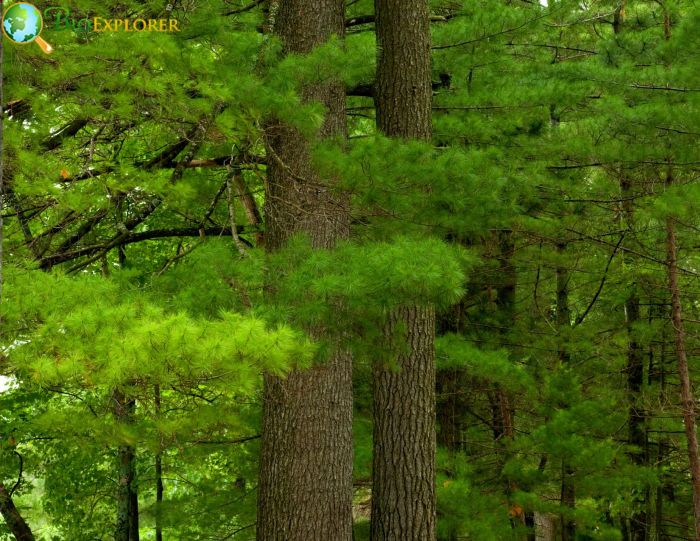
- This evergreen tree usually reaches 50 to 80 feet. However, there have been instances of trees soaring over 150 feet.
- Its trunk can grow up to 3 feet in diameter, providing a foundation for its stature.
- One distinctive feature of this tree is its bark. In trees, the bark appears smooth.
- Has a gray-green hue. As the tree matures, the bark becomes deeply grooved. Takes on a brown color.
- This textured bark adds an element to the tree’s overall look.
- The needles of the Eastern White Pine are soft and flexible. Have a green coloration. They grow in bundles of five needles, each setting it apart from the species.
- These needles can range from 2 to 5 inches long. Create foliage that remains vibrant all year round.
- Another noteworthy characteristic of this tree is its cones. The cones are slender and soft to the touch. It can reach lengths of up to 8 inches. Initially green in color, they gradually turn brown as they mature and release their seeds.
Growth Rate and Lifespan
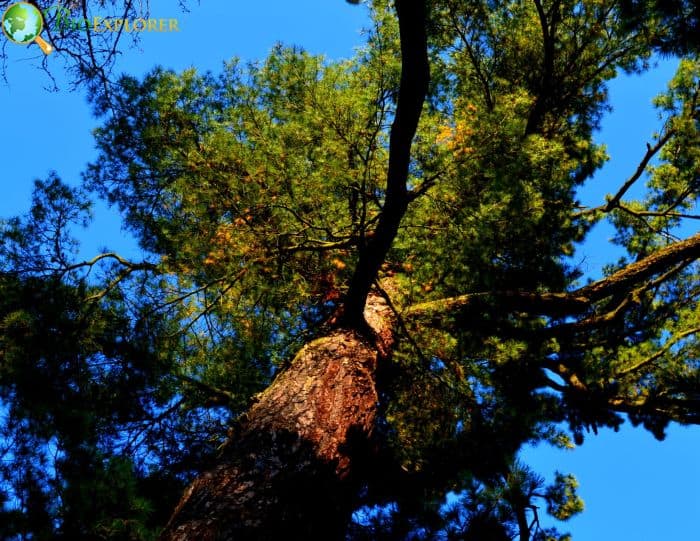
The growth rate and lifespan of the Eastern White Pine are remarkable.
- This pine species is known for its growth of reaching up to 2 feet per year under ideal conditions. Its rapid growth and resilience make it popular for reforestation projects and landscaping.
- Regarding lifespan, it is a living tree. With care and favorable surroundings, these trees can survive for centuries. Some known specimens are estimated to be over 400 years old.
Distribution and Habitat
Regarding distribution and habitat, the Eastern White Pine can be found across North America.
- It is native to the regions of the United States and eastern parts of Canada. Its range extends from Newfoundland in the east to Minnesota in the west and from Illinois down to Maryland.
- This versatile tree thrives in habitats ranging from rocky ridges to wet, swampy areas. While it prefers drained soils with acidity, it can also adapt to different soil types.
- This coniferous tree also exhibits shade tolerance during its stages of growth; however, it flourishes best when exposed to full sunlight.
Eastern White Pine Historical Significance
This North American tree holds more than the status of a tree; it stands as a living testament to the tapestry of American history. Throughout the nation’s past, this majestic presence has witnessed moments ranging from the Revolutionary War to the era of shipbuilding and logging operations. Its historical significance is further emphasized by its importance among Native American communities.
Contribution to the Pine Tree Riot and Revolutionary War
Surprisingly, the Eastern White Pine shaped events leading up to the American Revolution.
- The straight and towering trunks of these trees were highly sought after for crafting ship masts, which were in demand by the British Royal Navy.
- In an attempt to safeguard these resources, restrictions on cutting down pines in the American colonies were imposed by the British Crown. However, such limitations faced resistance from colonists.
This tension eventually led to an event known as the Pine Tree Riot of 1772 in New Hampshire.
- During this act of rebellion, a group of colonists openly. Cut down white pines despite regulations enforced by the Crown.
- It is considered one of the sparks that ignited America’s fight for independence during the Revolutionary War, highlighting how symbolic and influential Eastern White Pines became.
Role in History; Shipbuilding and Logging Operations
Apart from its involvement in activities throughout history, Eastern White Pine has been at the core of sectors within American industry, such as shipbuilding and logging operations.
- During the 19th century, people heavily relied on the timber of the Eastern White Pine for shipbuilding, construction, and logging activities. Its workable wood was prized for its softness, making it highly suitable for these purposes. This significant demand played a role in boosting the growth of the emerging nation.
- The logging of Eastern White Pines also shaped towns and cities in the northeastern United States and eastern Canada. These logging towns often revolved around sawmills, with the white pine playing a role in driving their economies.
Cultural significance

In culture, this majestic tree holds great importance.
- Various tribes utilized this tree to craft tools and construct canoes. The needles of this tree were particularly valued due to their Vitamin C content, which made them effective in treating scurvy.
- Symbolically speaking, peace and serenity are often associated with the Eastern White Pine. The Iroquois Confederacy, also known as the Five Nations, embraced this tree as a symbol representing unity within their alliance.
- According to tradition, they considered an Eastern White Pine their “Tree of Peace“, beneath which leaders buried their weapons of war.
Eastern White Pine Biological Aspects
The Eastern White Pine is truly fascinating from a biological standpoint. Its classification, in the realm of its reproductive methods, and its interactions with pests and diseases all contribute to its position in the natural world.
Scientific Classification and Related Species
Belonging to the Pinaceae family, which encompasses pines, spruces, firs, and larches, the Eastern White Pine finds itself in the company. Its genus, Pinus, stands alone as the genus within the Pinoideae. The species name strobus specifically refers to this type of pine.
While it remains a species on its merits, the Eastern White Pine shares connections with other species within the Pinus genus. Notable examples include the Western White Pine (Pinus monticola), Sugar Pine (Pinus lambertiana), and Limber Pine (Pinus flexilis), among others.
Reproduction and Growth Process
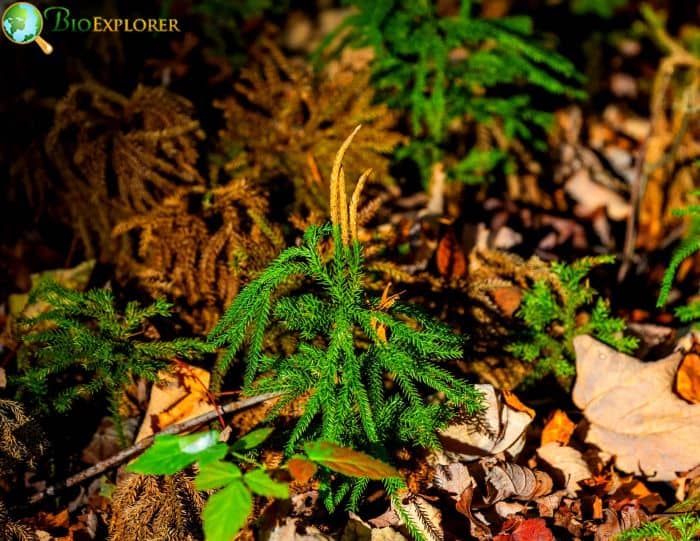
Reproduction for the Eastern White Pine occurs through seeds housed within its cones.
- These cones reach maturity during autumn, two years after pollination takes place.
- Once matured, they open up to release their seeds into the world. Thanks to their winged structure, these seeds can be dispersed over distances by wind.
- Regarding the growth process, this tree is renowned for its rate of development. Under conditions, seedlings have been observed growing up to 2 feet per year.
- The tree’s growth is impressive as it progresses from youth to maturity, maintaining a pace.
Disease resistance and common pests
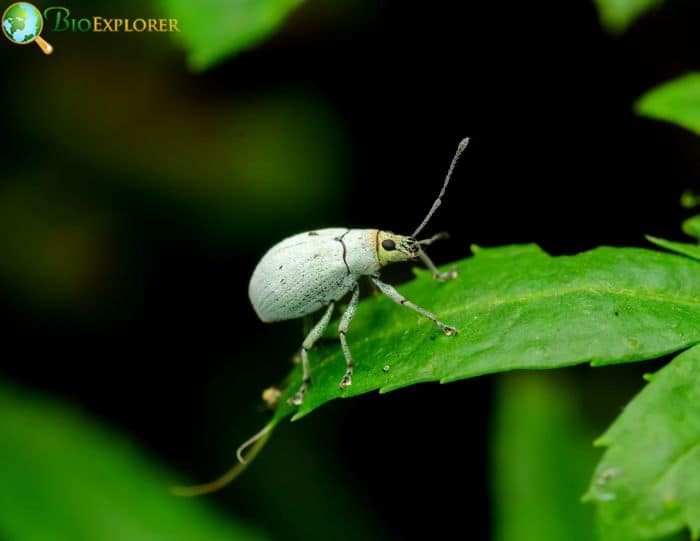
The Eastern White Pine displays resistance to diseases and pests. However, there is a vulnerability to white pine blister rust caused by the fungus Cronartium ribicola. This particular disease can cause harm in regions where the tree is not originally found.
As for pests that commonly affect the Eastern White Pine, we have the white pine weevil, which can hinder growth by damaging the shoot, and the white pine sawfly, which feeds on its needles.
Despite facing these challenges, this tree species demonstrates resilience. With care and management, it can continue to fulfill its crucial role within our ecosystem.
Uses of Eastern White Pine
The Eastern White Pine is a tree that serves purposes. Its versatility and unique characteristics have made it a valuable construction, furniture-making, and landscaping resource. Native American tribes have also recognized its significance through their uses.
Application in Construction and Furniture Making
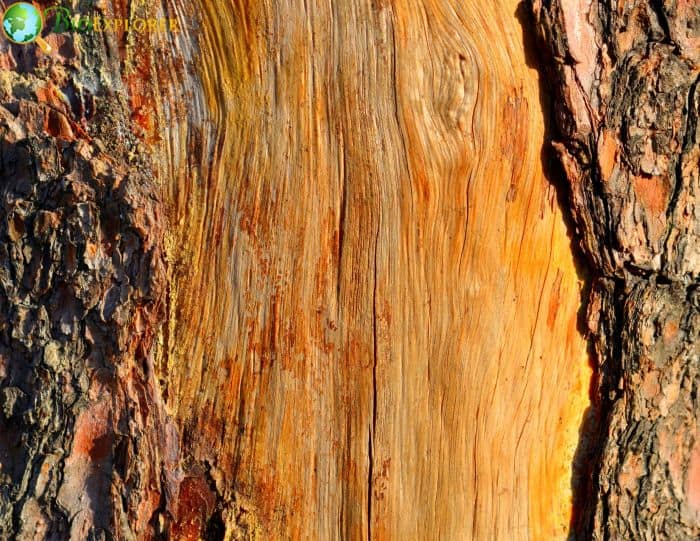
- The Eastern White Pines wood is soft, lightweight, and easy to work with, making it highly preferred for construction and furniture production.
- Its straight grain and resistance to warping make it an excellent choice for constructing frames, paneling, and flooring.
- Its light color and fine texture make it a popular option for crafting furniture pieces, cabinets, and doors.
Utilization in Landscaping as Ornamental Trees
In landscaping, the Eastern White Pine holds value for its growth rate and aesthetic appeal.
- Its tall trunk with a posture combined with its foliage gives it an alluring presence in parks, expansive gardens, or windbreaks.
- It is often utilized as a specimen tree or as part of a mixed conifer border.
Additional Applications
The wood of the Eastern White Pine finds uses beyond construction and furniture making.
- Its strength-to-weight ratio makes it perfect for manufacturing crates, boxes, and other wooden containers due to its ease of carving properties cherished by woodworkers and sculptors alike.
- Throughout history, the timber of the Eastern White Pine has played a role in shipbuilding, particularly when crafting ship masts.
- Apart from its application in shipbuilding, this majestic tree has various uses. Native American tribes relied on parts of the tree for sustenance and medicinal purposes. The inner bark, or cambium, was consumed fresh or dried and ground into flour. The needles, abundant with Vitamin C, were utilized to brew a tea that effectively prevented scurvy.
- In terms of value, both the bark and resin were employed to address an array of ailments such as wounds, burns, coughs, and colds.
- Furthermore, this versatile wood was used to construct dwellings, fashion tools, and even craft canoes.
Eastern White Pine Care and Maintenance
Taking care of an Eastern White Pine involves understanding its requirements and creating the conditions for its growth and development.
Ideal Soil and Climate Conditions
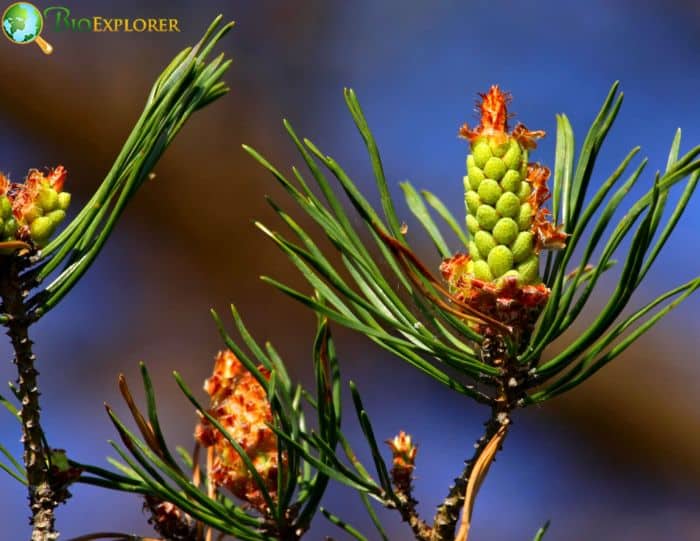
Eastern White Pines thrive in drained, acidic soils.
- While they can adapt to soil types, avoiding drained or compacted soils is important as they can lead to root diseases.
- The tree prefers the sun. It can tolerate partial shade, especially during its initial stages of growth.
- In terms of climate Eastern White Pines are resilient. It can withstand winters. Their natural habitat is the United States and eastern Canada, indicating their preference for climates.
Watering and Fertilizing Needs
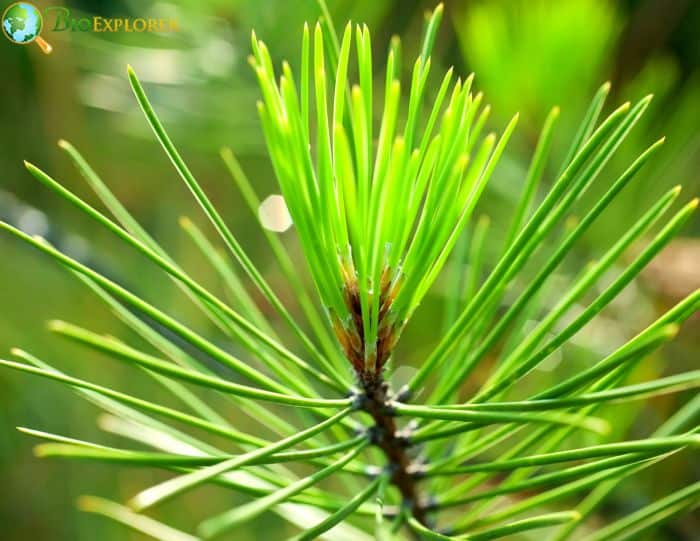
Young Eastern White Pines require watering during dry periods.
- Once established, they can handle some drought. Perform best when provided with moisture.
- As for fertilizing, Eastern White Pines generally do not necessitate it if planted in soil. However, if the soil quality is poor, applying a release fertilizer in early spring can be beneficial.
Pruning and Disease Prevention
Pruning Eastern White Pines is typically unnecessary unless you wish to shape the tree or remove damaged branches.
- If pruning is required, it’s best done in winter or early spring when the tree is dormant.
- It is important to check for any signs of pests or diseases like discolored needles or dying branches to prevent the spread of diseases.
- If you are concerned about white pine blister rust in your vicinity, it’s best to refrain from planting Eastern White Pines to currant or gooseberry plants, as they can carry the disease.
Eastern White Pine Environmental Impact and Conservation
The Eastern White Pine plays a role within its ecosystem, maintains a conservation status, and faces various impacts from climate change.
Role in the Ecosystem
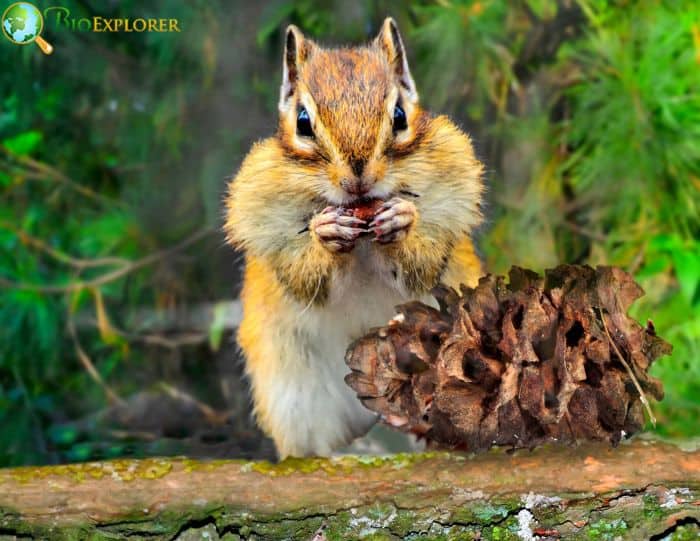
Eastern White Pines have an impact on their ecosystems.
- Their dense foliage provides shelter for bird species, while their seeds serve as a food source for squirrels, chipmunks, and many other birds including Cassin’s Finches.
- These trees also provide sites for birds of prey, such as eagles and ospreys.
- Eastern White Pines also contribute to soil stabilization with their root systems helping to prevent soil erosion in sloped areas.
Conservation Status and Efforts
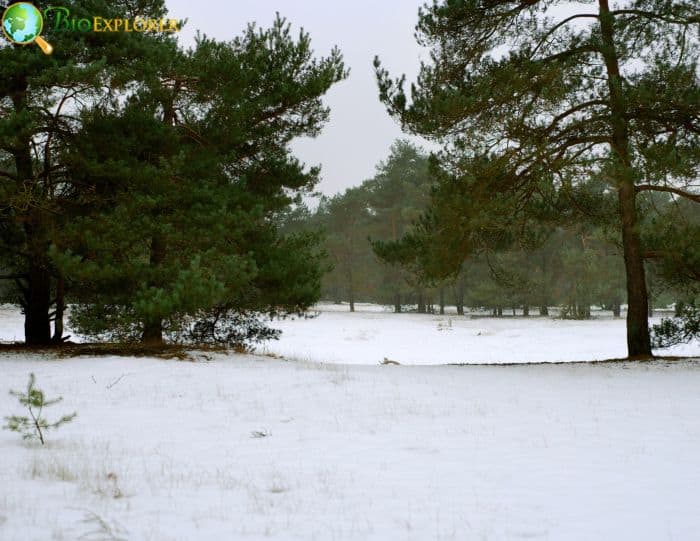
According to the IUCN Red List, the conservation status of Eastern White Pines is currently classified as “Concern .” This indicates that the species is not at risk of extinction. However, this does not imply that the trees are completely free from threats. Ongoing concerns include habitat loss due to development and logging and susceptibility to diseases like white pine blister rust.
Efforts to conserve Eastern White Pines involve forestry practices preserving habitats, and implementing reforestation projects. These initiatives strive to maintain populations of these trees while ensuring their continued contribution to the ecosystem.
Like other tree species, the Eastern White Pine is at risk due to climate change. The changing temperature and precipitation patterns can affect its growth and reproduction ability. Additionally, higher temperatures may lead to pests and diseases that can harm the tree.
Frequently Asked Questions
What distinguishes the Eastern White Pine Tree from other members of the pine group?
The Eastern White Pine Tree, also known as the Northern White Pine, is native to Eastern North America, predominantly in the Eastern United States. It’s known for its straight trunk, conical shape, and blue-green needles, unique features of the pine group. Additionally, it is a cultivar identified by its cylindrical, blueish-green color and feathery needles, adding an aesthetic value to any landscape.
Can the Eastern White Pine Tree be grown in any soil?
Whilst the Eastern White Pine Tree can adapt to many soil types, it prefers well-drained and slightly acidic clay soils. It can also thrive in full sun and partially shaded areas, which further makes it an adaptable landscape tree.
Is the Eastern White Pine Tree suitable for urban planting and cultivation?
Yes, the Eastern White Pine Tree can be used as a landscape tree in urban areas. However, it is best suited for large, open spaces due to its large size when mature, with some large white pines reaching over 20 feet.
Why is the Eastern White Pine commonly used for lumber?
The Eastern White Pine is a type of soft pine that has a light brown color. Its straight trunk and cylindrical form yield a lot of quality timber. It’s easy to work with and resistant to wear, making it an ideal choice for lumber.
Can the Eastern White Pine Tree be used for bonsai?
Yes. The Eastern White pine, particularly when young, can be groomed and shaped as a bonsai. Young trees are relatively pliable, and their growth patterns make for attractive miniaturized trees.
How does the Eastern White Pine Tree reproduce?
The Eastern White Pine Tree usually blooms during the second season. The tree produces pollen and pine cones, from which new trees can grow. The seeds inside the pine cones are also a food source for small mammals.
What is the importance of the Eastern White Pine Tree in the ecological system?
The Eastern White Pine Tree is crucial in its native ecosystems. It produces large quantities of seeds, a primary food source for small mammals. Its dense clusters of blue-green needles also provide shelter to various bird species.
How does the Eastern White Pine handle humid climates?
The Eastern White Pine Tree thrives in humid climates. Its native range in the Eastern United States consists of regions with humid climates. The tree prefers consistent moisture, but it’s important that the soil is well-drained.
Is the Eastern White Pine used for Christmas trees?
Yes, the Eastern White Pine’s feathery, bluish-green needles and full, conical shape make it a favorite choice for use as a Christmas tree.
Are there any known pests or diseases of the Eastern White Pine Tree?
While the Eastern White Pine Tree is generally durable, it is susceptible to a few pests and diseases. Problems include white pine weevil and white pine blister rust. Regular monitoring and preventative treatment typically keep these problems at bay.
![]()
Conclusion
The Eastern White Pine is a testament to the beauty and strength of nature. Its majestic presence, history, and numerous practical uses highlight its significance in our surroundings and daily lives. Whether utilized in construction, furniture crafting, or playing a role, this tree stands out as exceptional in the ecosystem.
As we peer into the future, the Eastern White Pine encounters climate change and habitat degradation challenges. However, we can ensure this remarkable tree thrives for generations through conservation endeavors and sustainable practices. Let’s treasure and safeguard the Eastern White Pine-a gift bestowed upon us by nature.










